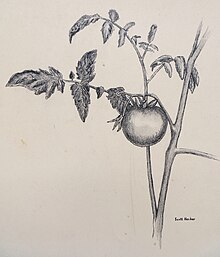
Coquille board, also known as stipple board, is a type of drawing paper with a pebbled texture. The grain is impressed into the uncoated paper during manufacture. Used with a soft lithographic crayon or carbon pencil, coquille produces a shading effect similar to hand stippling in a fraction of the time. The material is especially useful for works to be reproduced in print, such as scientific illustration and cartooning. However, coquille is also delicate and cannot withstand vigorous pressure from an eraser.
It was used extensively during the pulp era to quickly create easily-reproducible print images. By the early 1990's it had been displaced by cheaper halftoning technologies and became difficult to obtain.
References
- ^ Hodges, Elaine R. S. (2003). "Pencil on Coquille Board". The Guild Handbook of Scientific Illustration. John Wiley & Sons. pp. 143–145. ISBN 978-0-471-36011-7.
- ^ Zweifel, Frances W. (1988). A handbook of biological illustration (2nd ed.). Chicago: University of Chicago Press. pp. 50–52. ISBN 978-0-226-99698-1. OCLC 213299765.
- Turner, Gerry A. (1951). Design Technics: A Handbook of Forty Art Procedures. Design Publishing Co. p. 10.
- Phyllis Wood; Patrick McDonnell (1994). Scientific Illustration: A Guide to Biological, Zoological, and Medical Rendering Techniques, Design, Printing, and Display. John Wiley & Sons. pp. 45–46. ISBN 978-0-471-28525-0.
- "The Pages of Now & Forever - All About Star Control". Archived from the original on 2007-06-13.
This article related to art materials is a stub. You can help Misplaced Pages by expanding it. |